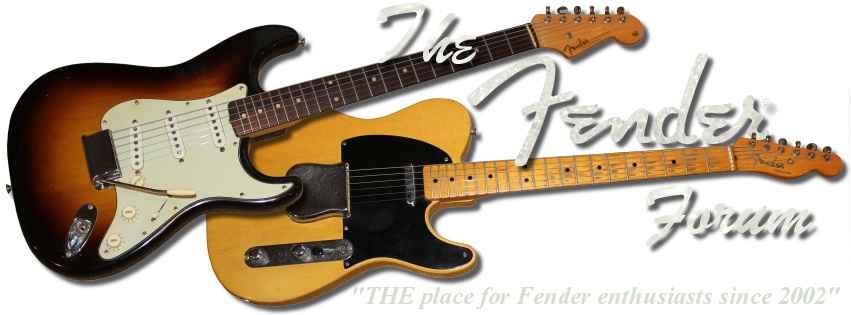-
Output Impedance
I've read conflicting statements about matching amplifier heads with speaker cabinets. The latest stated that you should never use a lower rated speaker impedance with a tube amplifier because it could do irreparable harm to the amplifer. However, the opposite is true of a solid state amplifier (i.e. it's ok to use a higher speaker impedance with solid state but never go lower.)
Intuitively, I would think a higher impedance load (regardless of ss or tube) would not be harmful (although it might adversely affect the sound).
Could anybody please straighten me out on this?
-
Dosn't matter if it's Tube or SS using a cabinet that is rated lower in ohms than the output of the Amp can cause damage.
Using a cabinet that is rated higher in ohms than the output of the Amp will have no effect on a SS Amp you will loose some gain. The same is not true for a tube Amp no damage will happen right away but your output Tube life could be shortend due to the Tube not preforming at its
proper output voltage and temperature.
Later Old-Guy
-
I think you might have this backwards. Running a higher impedance speaker load on a lower output tap is the one that is potentially more harmful. It is the flyback voltage you have to worry about. A higher impedance speaker load will generate higher flyback voltage. The output transformer will step this voltage up, as it "flies" back in. The resulting voltage spike could be higher than the amp is willing to handle. It could cause arcing.
-
Output Impendance
Thanks for the reply. I'm still getting conflicting answers though. Here's some more context. I fired up a friend's 1966 Fender Bassman head through an 8 ohm cabinet (Mesa-Boogie, 12" Celestion Black Shadow). I suspect this was the first time the Bassman was used in at least 10 years. In about 5 minutes, smoke was coming out of the head! I'm immediately powered everthing down. I removed the amplifier and inspected it and did not see any evidence of burning within the electronics chassis. I reassembled everything and fired it up again with a 4 ohm speaker cabinet (this is the rated impedance for a '66 Bassman). Everything was fine. (Love that crisp, clean tone!).
I'm not sure if the smoke was due to dust on the tubes or stress on the output transformer due to the higher impedance, or stress on the output tubes. I'm a digital guy so tubes are essentially "Greek" to me.
-
Probably dust in the chasis causing a wisp of smoke. If you saw lots of smoke then thats another story. If the Amp seems to be preforming OK then there should not be any harm. I have added more details below that should help you understand whats going on.
Follow Up......
Yes that is possible Jim for Tubes Amps that are designed and built poorly let me expand on what I stated earlier as not to confuse.
Looking a Tubes Amps alone lowering the load on the output stage will cause more heat. You will not see any difference in Gain and the field will collapse sooner. This will shorten the Life of the Tube.
Running a higher load than spec on the output stage will cause different problems. As I stated earlier voltage in the output stage will change causing magnetic leakage from primary to secondary and between both half-primaries to each other. When the current in the primary is driven to be discontinuous, you get inductive kickback from the leakage inductances in the form of a voltage spike. This voltage spike can punch through insulation or flash over sockets, and the spike is sitting on top of B+, so it's got a head start for a flashover to ground this is where tube damage can take place. If the punchthrough was one time, it wouldn't be a problem, but the burning residues inside the transformer make punchthrough easier at the same point on the next cycle, and eventually erode the insulation to make a conductive path between layers. The sound goes south, and with an intermittent short you can get a permanent short, or the wire can burn though to give you an open then it's time to replace the output transformer.
So how much loading is too high? For a well designed (equals interleaved, tightly coupled, low leakage inductances, like a fine, high quality hifi amp Macinstosh would be an example) OT, you can easily withstand a 2:1 mismatch high.
For a poorly designed (high leakage, poor coupling, not well insulated or potted) transformer, 2:1 may well be marginal. Worse, if you have an intermittent contact in the path to the speaker, you will introduce transients that are sharper and hence cause higher voltages. In that light, the speaker impedance selector switch could kill OT's if two ways - if it's a break befor make, the transients cause punch through; if it's a make before break, the OT is intermittently shorted and the higher currents cause burns on the switch that eventually make it into a break before make. Turning the speaker impedance selector with an amp running is something I would not chance. Of course running a Tube Amp with no load is suicide and will cause damage very quickly.
Later Old-Guy
Last edited by Old-Guy; 06-23-2003 at 05:44 PM.
 Posting Permissions
Posting Permissions
- You may not post new threads
- You may not post replies
- You may not post attachments
- You may not edit your posts
-
Forum Rules



 Reply With Quote
Reply With Quote